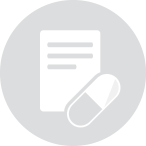Contact Jacoby & Meyers
Dangerous Drug Lawyers
Call us Today 800-977-5614

Avastin is the best-selling cancer drug in the world, and was the first approved therapy to inhibit angiogenesis, which is the process by which new blood vessels carry nutrients to a tumor. Avastin was approved in 2004 to treat metastatic colon cancer, but has since then been approved to treat other cancers such as breast, lung, kidney and brain cancers. Along with being one of the most popular drugs on the market, Avastin is also one of the most expensive drugs on the market—ranging from $50,000 to $100,000 a year. Many have criticized this high cost due to the fact that Avastin neither cures cancer nor significantly prolongs life. One off-label application of the drug is prescribed by some ophthalmologists. An Avastin eye injection can be used in the treatment of macular degeneration.
New research has emerged that links Avastin to an increased risk of death in some cancer patients, specifically breast cancer patients, when compared to the use of chemotherapy alone.
Four different Avastin clinical studies showed that the use of the drug in 3,000 women with breast cancer did not prolong the overall survival rate, nor did it provide a sufficient benefit in slowing the progression of the disease. Side effects linked to the use of Avastin in breast cancer patients included severe high blood pressure, bleeding and hemorrhage, development of perforations in the nose, stomach and intestines, heart attack and heart failure. Researchers concluded that these risks far outweighed the benefits of Avastin.
In 2010, after reviewing the available data, an independent advisory committee voted 12 to 1 to remove the breast cancer indicator on Avastin’s label. Months later, the FDA agreed and began the same process.
Avastin has also been linked to fertility problems in women taking the drug. In 2011, the FDA announced that it was updating Avastin labels to warn about the risk of “ovarian failure.” The warning advised doctors to inform women of child-bearing age about the potential for ovaries to stop releasing eggs prematurely.
In a clinical trial involving 179 women with colon cancer who were being treated with chemotherapy, half of the women took Avastin. The study found that nearly 35 percent of women from the Avastin group experienced ovarian failure—compared to the two percent of women who received chemotherapy alone. 20 percent of women in the Avastin group regained ovarian function after discontinuing Avastin.
Research conducted by a team at Johns Hopkins University tested the use of Avastin in an “off-Label” capacity, testing the effectiveness of the drug in age-related macular degeneration (AMD). AMD affects more than two million Americans over the age of 50 and causes blindness. When compared to the drug Lucentis, a drug created specifically to treat AMD, Avastin was linked to an increased risk of stroke and death. Avastin users were linked with an 11 percent increased risk of death and a 57 percent increased risk of stroke over Lucentis users. Avastin has been found to be as effective as Lucentis in healing AMD, although it is an off-label use for the drug. The motivation behind prescribing Avastin over Lucentis has been seen in the price of the drug; Avastin costs around $50 per shot, while Lucentis is in the $2000 per shot range.
Aventis has also been seen to significantly increase the risk of death in some cancer patients, as well. The Journal of the American Medical Association conducted research which found that the risk of death from Avastin is 2.5 percent when used with chemotherapy, compared to a 1.7 percent death rate among patients being treated with chemotherapy alone. In 2006, several Avastin patients died suddenly when being treated with a combination of Avastin and Xelox, another anti-cancer drug.
Side effects may include:



Lawyer Advertising. This website is designed for general information only, and in no way is intended to constitute legal advice nor the formation of a lawyer/client relationship without a signed, written agreement. Testimonials or endorsements do not constitute a guarantee, warranty, or prediction regarding the outcome of your legal matter. You pay no fees or costs unless we recover for you. This website contains dramatizations. Prior results are not a guarantee of a future outcome. Jacoby & Meyers does not accept all cases and works cooperatively with co-counsel and/or other law firms with whom it has joint agreements who might potentially handle your cases. We look forward to helping you with your claim.
© 2012-2024 Jacoby & Meyers. All rights reserved.